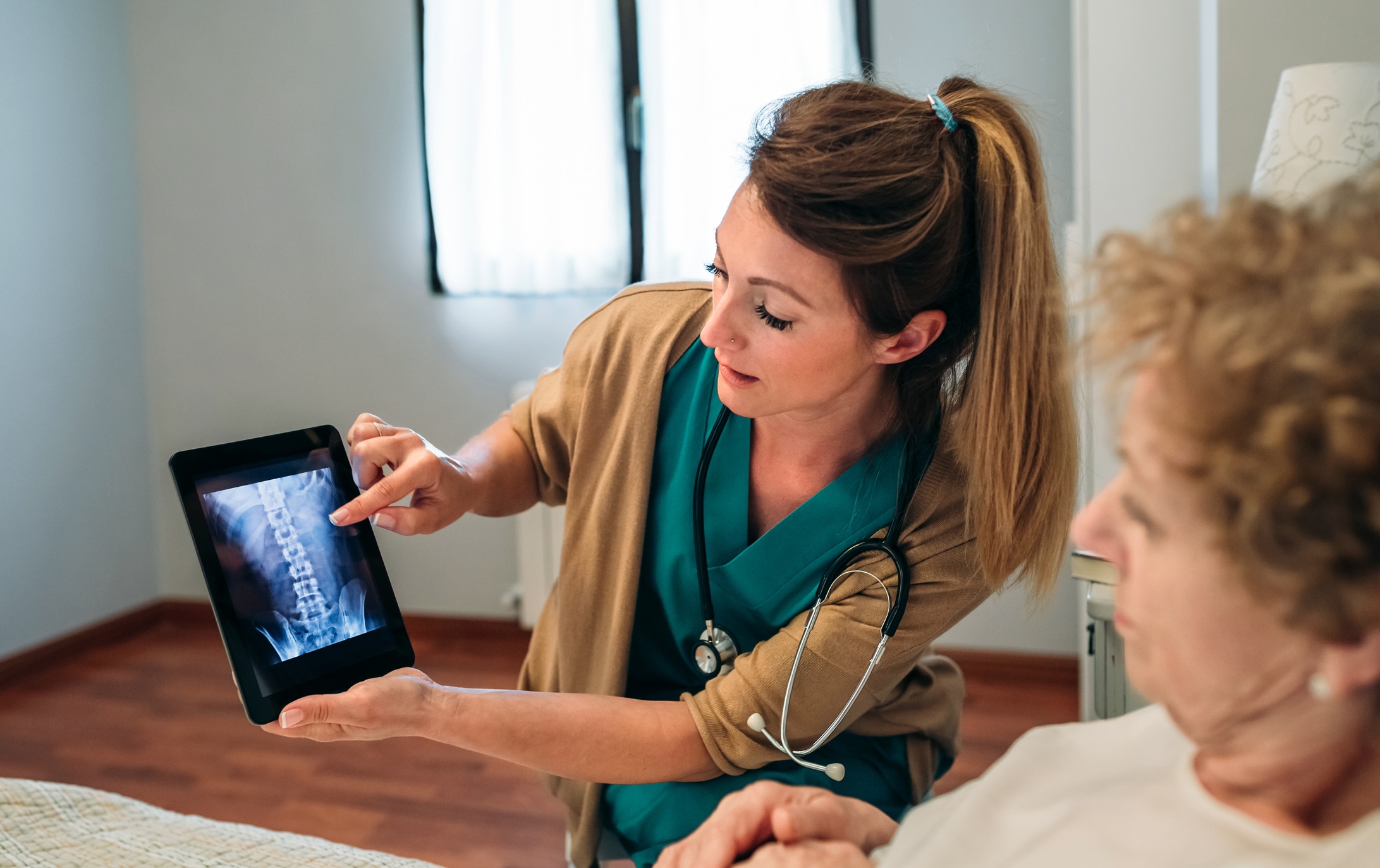Osteoporosis is the enemy of a well-lived old age. To know whether or not a patient has osteoporosis, at Summit Healthcare we perform what is known as a DEXA scan, dual energy X-ray absorptiometry.
DEXA scans usually focus on the hips and the spine. These scans measure bone loss. We use these to guide our treatment for our patients who may be at risk for developing osteoporosis, a deterioration of the patient’s bones making them more likely to fracture.
What is a DEXA scan?
Bone density scanning, also called dual-energy x-ray absorptiometry (DEXA), is a painless imaging test that is used to measure bone loss. It involves exposing the lower spine and hips to a small amount of ionizing radiation to form pictures of the bones. DEXA technology has software that calculates and displays bone density measurements. DEXA is most often used to diagnose osteoporosis.

What does a DEXA scan diagnose or detect?
We use a DEXA scan to diagnose osteoporosis. Osteoporosis is a condition often found in women after menopause, although it can also affect men. Osteoporosis involves the gradual loss of bone, as well as structural changes, causing the bones to become thinner, more fragile, less able to absorb stress, and more likely to break.
DEXA scans are also useful when we’re trying to track the effectiveness of our osteoporosis treatments.
These tests can be used to gauge a patient’s risk for developing a bone fracture, as well. This risk is affected by age, body weight, history of prior fracture, family history of osteoporosis, and lifestyle issues such as smoking.
Who should get a DEXA scan?
These tests are strongly recommended if a person:
- Is a post-menopausal woman not taking estrogen
- Has a personal or maternal history of hip fracture or smoking
- Is a post-menopausal woman who is tall (over 5’7”) or thin (less than 125 pounds)
- Is a man with clinical conditions associated with bone loss, such as rheumatoid arthritis, or chronic liver or kidney disease
- Uses medications associated with bone loss, such as corticosteroids, anti-seizure medications, or high-dose thyroid replacement drugs
- Has type 1 diabetes, liver disease, kidney disease, or a family history of osteoporosis
- Has high bone turnover
- Has a thyroid condition
- Has a parathyroid condition
- Has fractured a bone despite only mild trauma
- Has x-ray evidence of a vertebra fracture
Pregnant women cannot have a DEXA scan.
What do you need to do to prepare for a DEXA scan?
There aren’t extensive requirements to prepare for these tests at Summit Healthcare. You can eat normally the day of the test, but if you take a calcium supplement, you’ll need to skip that for 24 hours prior to your test.
Wear loose, comfortable clothing, avoiding options with zippers, belts, or buttons made of metal. You’ll likely be asked to remove jewelry, removable dental appliances, eyeglasses, metal objects, or any clothing that would interfere with the x-ray images.
If you’ve recently had a barium examination or have been injected with contrast material for a CT scan, you’ll probably need to wait 10-14 days before you can have a DEXA scan.
During The Bone Density Scan
You’ll lie face up on a padded table. An x-ray generator is located below you and an imaging device above. To measure the spine, your legs are supported on a padded box to flatten the pelvis and lower the lumbar portion of your spine. To measure the hip, the patient’s foot is placed in a brace that rotates the hip inward. For both target areas, the detector is slowly passed over the area, generating images on a computer monitor.

When the detector is passing, you’ll need to remain completely still and may be asked to stop breathing for a few seconds to avoid blurring the image.
How long does a DEXA scan take?
These tests do not take long, usually only 10-30 minutes. You may resume your normal activities and diet immediately following the test and a report from today’s exam will be sent to your doctor within 24 hours.
How are the results of my DEXA scan interpreted?
One of our Summit Healthcare radiologists will analyze your DEXA scan. He or she will send a signed report to your primary care or referring physician, who will then discuss the results with you.
Your results will be in the form of two scores:
- T score — This number shows the amount of bone you have compared with a young adult of the same gender with peak bone mass. A score of -1 and above is considered normal bone density. A score between -1.1 and -2.4 is classified as osteopenia (low bone mass). A score of -2.5 and below is defined as osteoporosis.
- Z score — This number reflects the amount of bone you have compared with other people in your age group and of the same size and gender.
What are the risks of a DEXA scan?
When you’re dealing with radiation, there is always a slight chance of developing cancer, but the amount of radiation in these tests is extremely low, less than one-tenth the dose of a standard chest x-ray. For an idea of the level, a DEXA scan gives you less radiation than a day’s exposure to natural radiation in the environment.
Otherwise, these tests are painless, non-invasive, and quick. They are very valuable for ascertaining your risk for osteoporosis.
